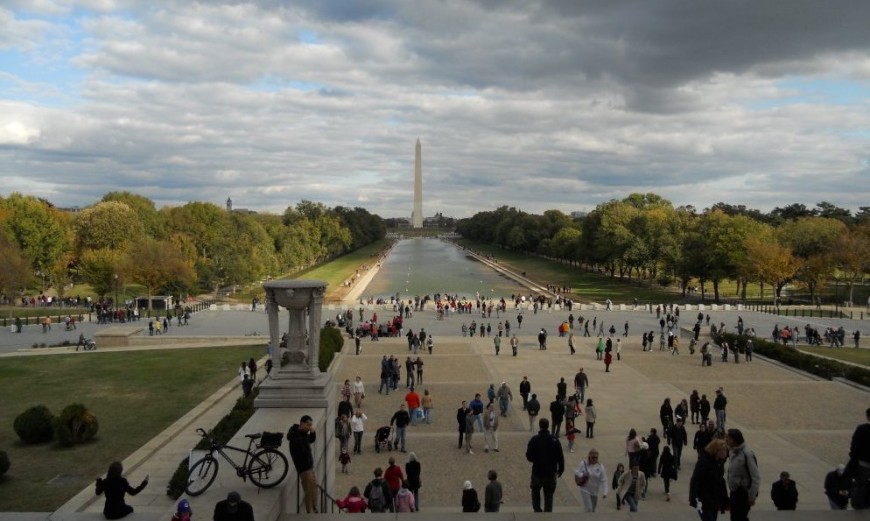When to go to Washington DC
In our view, the best time of year to visit Washington is the spring and the autumn. The summers can be very hot and humid and the winters can be bitterly cold.
Spring in Washington DC starts with the cherry blossom season which is around late March and early April. The banks of the Tidal Basin and the Washington Monument grounds are planted with several different varieties of cherry tree which produce a beautiful display of blossom. The original trees were a gift from Japan in 1912, but there are now over 3,500 trees. The National Park Service predict the time the trees will bloom each year and a National Cherry Blossom Festival takes place to celebrate the event.
Although the blossom looks stunning, I would rather go to Washington later in the spring when things have warmed up a little and you have better chances of a dry day. It is a busy season with lots of school trips and other tourists, but the days are long and you can often catch a quiet window in the early morning or late evening.
If you are travelling during the school holidays then you may end up taking your trip in the summer. This has the benefit of being one of the quieter times of year – Congress is out until mid-September so the hotels tend to be emptier. You may be lucky and get pleasant weather for your trip, but there is a good change it may be hot and also humid. This is fine when you are indoors as everywhere is air conditioned, but it may be uncomfortable outside. Make sure you have plenty of sunscreen, a broad brimmed hat and that you drink plenty of water.
The temperatures should start to cool down in Washington DC from September onwards. September and October can be great months to visit with warm days and cool nights.
Winter is the best time to visit to avoid other tourists and the weather can be very mild. It can also be brutally cold, especially with the wind whipping off the river. If you do travel in the winter take plenty of warm clothing and check it in the cloakrooms at the museums to avoid overheating.
For more information on the weather check out weather.com and our information about the US climate.

